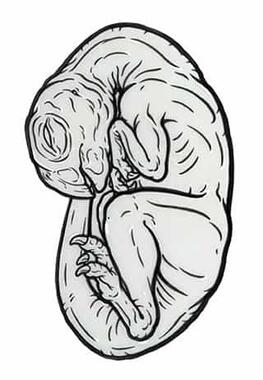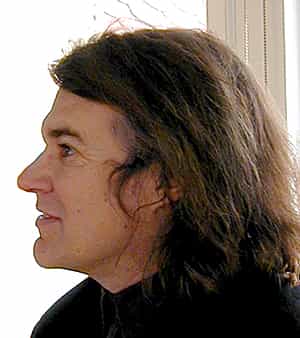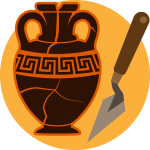An "Eggs-traordinary" Discovery
In 1993, Mark Norell discovered a fossilized egg containing a curled-up oviraptorid embryo. These tiny bones helped explain a discovery from over 70 years ago. In the 1920s, Roy Chapman Andrews and his team had found a fossil of an adult Oviraptor on a nest of eggs. Andrews believed that the eggs belonged to Protoceratops, a common Cretaceous Gobi dinosaur. His theory was that the Oviraptor was raiding a nest of Protoceratops eggs. Because Dr. Norell's 1993 egg matched the eggs found in the 1920s, scientists now think that the Oviraptor found by Dr. Andrews was actually protecting its own nest of eggs.
Preparation: fossil in matrix
Locality Found: Ukhaa Tolgod, Mongolia
Date Collected: July 1993
Expedition Name: Gobi Expedition
Size: uncurled, the embryo would measure about 8 inches (20 centimeters) in length
Condition: well preserved, but missing tail and hindlimbs

The oviraptorid embryo was first noticed in the egg when:
it was cracked open with a hammer
it was found in the desert
it was CAT-scanned for its contents
Correct!
The egg was found on the desert surface already broken-open and exposing the bones within.
Fossil dinosaur embryos are plentiful and easy to find.
Fiction
Scientists have found fossil embryos of only a few dinosaur species so far. The Oviraptor embryo is one of a kind.
It was possibly the greatest find we could ever imagine!

Mark Norell
paleontologist




 Biodiversity
Biodiversity
 Brain
Brain
 Genetics
Genetics
 Marine BiOLogy
Marine BiOLogy
 MicrobiOLogy
MicrobiOLogy
 PaleontOLogy
PaleontOLogy
 ZoOLogy
ZoOLogy
 AnthropOLogy
AnthropOLogy
 ArchaeOLogy
ArchaeOLogy
 Astronomy
Astronomy
 Climate Change
Climate Change
 Earth
Earth
 Physics
Physics
 Water
Water
